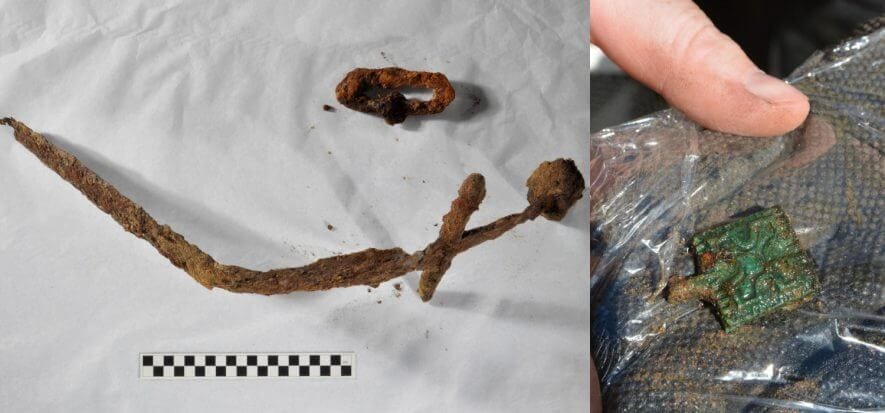A well of life, from which a thousand jugs and a series of metal objects leapt out, including billhooks, hatchets, sickles and razors for tanning hides as well as cutlery, knives, hooks and chains. This is the result of the excavations campaign at Campo della Fiera, under the Orvieto fortress in Umbria. The findings of the team of archaeologists from the University of Foggia, directed by Danilo Leone and Vincenzo Valenzano, have as their point of reference a well, 11 metres deep, that held about a thousand perfectly preserved jugs used between the 13th and 17th centuries.
From a well leaps the history of Orvieto
The cistern, which still collects water from the underground water table, was the water reserve of the medieval monastery of San Pietro in Vetere. It was in use even after the abandonment of the church complex, during the seasonal markets held next to the church in the 15th and 16th centuries. Many vases fell into the well accidentally, while others may have been dumped voluntarily during the plague of 1348-49, when the well was dismantled and the blocks of the structure thrown in.
As well as objects considered to be obviously contaminated. Among the findings, one reads online, is the flask of a pilgrim from the second half of the 13th century who, upon reaching the monastery, must have lost the container in the well in an attempt to fill it with water.
Meanwhile, in Finland
From an ad hoc excavation campaign comes a sword not in the rock, but in the soil of Finland. The artefact led to the discovery of a cemetery from the Crusader era. At the end of August, a local landowner literally saw a piece of iron protruding from a mound of earth in the trench of a geothermal pipeline in Perttel, in the south-east of the country. It was a sword, which came to light due to the rains.
The discoverer contacted the University of Turku, which involved the Turku Museum Centre. Initial excavations brought to light, among other finds, a leather belt decorated with bronze applications. The belt had about thirty square applications with rosette decoration and several cross-shaped pendants. This set also included a buckle, several terminal and animal head-shaped applications. The leather parts of the belt have been partially preserved.











